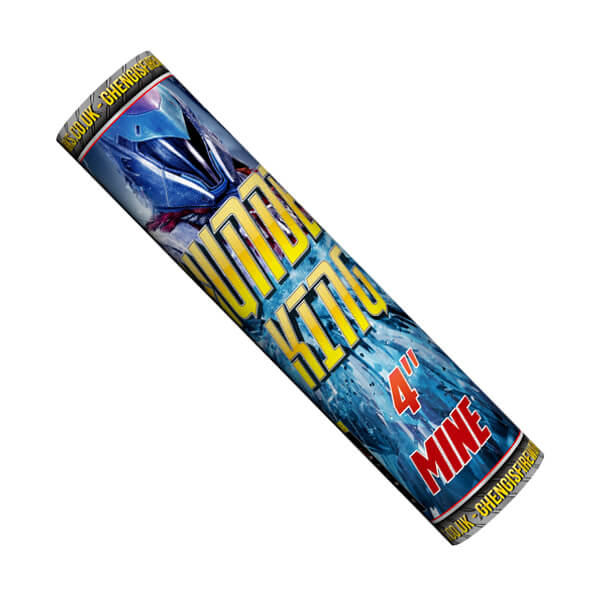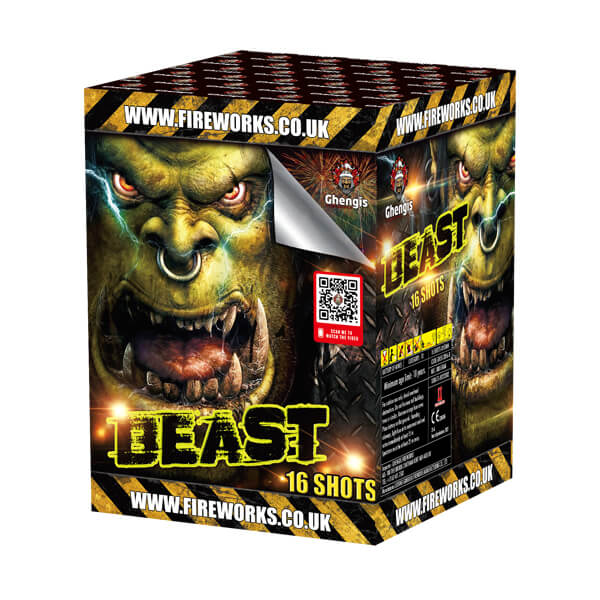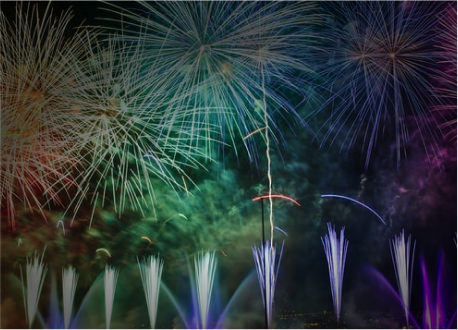Firework Glossary

Glossary of Firework Terminolgy
Ever been to a fireworks display or event and heard other people talking firework using technical terms that sound like utter jargon?
Our primary goal here at the Fireworks.co.uk, help you learn and understand more about fireworks!
The firework glossary below will help you to understand what each technical term means so the next time you are at a fireworks event or display you will b able to join in with those others talking shop!
Firework Glossary: Consumer Fireworks
Consumer fireworks or Shop fireworks have changed little over many years, although today’s generation of adults buying fireworks for their children will notice a few absences since the days of their own childhood: bangers, jumping crackers and the like.
Today, there is a far greater choice of effect and size, and a great improvement in quality, availability and value for money.
Firework buyers now expect year-round availability for weddings, birthdays and summer barbecues, and doorstep delivery for convenience.
This section describes the most popular types of firework, and the effects obtained.
Shop fireworks (or ‘Shop Goods’) are those defined as:
Category 2 (Cat2) 8m safety distance
Category 3 (Cat3) 25m safety distance
ROCKETS

A rocket consists of a tube of rocket fuel, sealed at one end, with a choke at the other end. The burning fuel produces exhaust gases, which, when forced out of the choke, produce thrust, propelling the rocket in the other direction. At the top of its flight, most rockets burst to display a variety of effects to rival many shells.
A rocket is not a projected but a powered one. Not only will it not describe a parabola, but a wind will catch the stick causing the climb to become flattered and, unlike the rest of the display the rocket will ascend into, not with the wind. Once the motor is spent the remains of the rocket will then descend with the wind, returning to the ground, sometimes exactly, at the firing point.
Solid fuel rockets can be one of two types – end-burning, where the fuel is solidly packed into the tube, so the fuel can only burn at one end – and core-burning, where there is a central core longitudinally through the fuel, so the fuel can burn down its full length. At the top of the rocket can be a smoke composition, so it is possible to determine the maximum height (“apogee”) of the rocket, or a burst charge and stars.
ROMAN CANDLES

Often called just ‘candles’, these burn gently for a while, periodically shooting out stars, comets or similar effects. Roman Candles willl vary in size, giving bigger effects as the size increases, or will be grouped in multiples in cakes or batteries giving a faster rate of firing.
FOUNTAINS

SINGLE SHOT MINES

SINGLE SHOT MINES

A multi-shot mine is basically multiple single-shot mines all fused together in one package usually with varying effects.
MULTI SHOT BARRAGES / CAKES

Better-known once as ‘cakes’ because of the shape of the earlier ones these are now usually referred to as multi shots, barrages or multishot barrages. They are now a mainstay of most displays large and small. It is essentially an assembly of tubes, usually single-shot Roman Candles, internally fused together to fire a rapid sequence from a single external fuse.
SINGLE IGNITION BARRAGES / CAKES

This is simply a large multishot barrage and there is no real differentiation between a large multishot and a small Single Ignition Unit. The reason why the distinction is made is that of the Single Ignition Unit’s value in putting on a decent display with the maximum of simplicity. They are also popular as a self-contained Finale item for a bigger display.
Each Unit comes in its own packing case and can be kept safe and sound almost to the last minute. In a few seconds, it is ready for action – a perfect flourish for a birthday or wedding celebration
CATHERINE WHEELS

In addition to the well-known Catherine Wheel – a coiled tube around a wooden hub, catherine wheels are found as an arrangement of ‘drivers’ (similar to rocket motors) fixed radially on spikes, and as Saxons – a tube nailed at one end to form a pivot so it spins when the other end is lit.
SPARKLERS

Need no description but are mentioned here with a cautionary word: although the sparkler is a delightful firework and rightfully popular with children, it is often forgotten that for just a few seconds what is left is a piece of almost red-hot wire. Be careful.
PORTFIRES / TAPERS

A long thin tube which burns with a bright flame, used to ignite other fireworks.
SET PIECES
A combination firework consisting of an assembly of wheels or fountains to form a pattern. Sometimes small fireworks called lances are grouped together to depict a simple image, or to spell out words such as ‘Goodnight’.
FIREWORK EFFECTS
So far the description of the main types of firework has been superficial but what is most important is what comes out of the tube, broadly summarised by the expression ‘effects’.
In fireworks, there are very few absolutes when it comes to descriptions of effects. The beauty and thrill of a firework is created by subtle blends of pyrotechnic compounds, and this is complemented by the copywriting skills of the person composing the catalogue and label descriptions. Here, then, are some of the most commonly encountered terms, grouped together in a way which will give you a broad understanding:
Visual Effects:
Stars: Small, glowing balls of fire, many coloured, used in Roman candles and the bursts of mines and rockets. They may change colour in flight, or finish with a sound effect.
Bombettes are stars which finish with a small explosion.
Comets: Larger than a star and glowing more brightly the comet, just like its stellar counterpart has a bright tail. Splitting comets fragment into several smaller ones.
Trails: Many types of stars will leave a trail of varying kinds. Look for descriptions such as palm, willow or brocade.
Blinking: Some stars will blink on and off at various intervals. Strobe is a blinking effect which is very bright silver like a flash and will descend very slowly through the sky
Serpents: These, snake and wriggle through the air, usually with accompanying sound effect.
Sound Effects:
Bang: No other description needed, except that in a firework it may be described as a report, signal, salute or a maroon.
Whistle: Again, the basic whistle needs no explanation, although it might also be described as screamer, screecher or similar.
Hummers: Vary from the gentle tones of the hummingbird to the angry note of swarming bees.
Crackle: Really a gentle bang but when dozens or even hundreds are heard almost all at once an entirely different effect is produced.
PROFESSIONAL DISPLAY FIREWORKS
Although it has been said above that fireworks descriptions can sometimes be angled towards enticing the customer, it must be said here that in the world of professional fireworks terminology is precise and rather more prosaic.
Battery
A battery is a collection of fireworks, often of different types, assembled together and fused in sequence. Usually used as an opener or a finale.
Black Match
Fuse consisting of a loosely woven string impregnated with black powder. Match is often supplied wrapped in a paper or plastic tube – piped match or quick match.
A line of powder on a Sellotape type material is known as a tape match. A variant of tape match called sticky-match has recently been patented in Australia in which the line of powder is covered by a second piece of tape.
Black Powder
Black powder is the mainstay of pyrotechnics. At a basic level, it is a mixture of potassium nitrate, charcoal and sulphur. However, simply mixing these ingredients together will not produce the proper black powder. It merely produces a much milder version, which itself is used extensively in pyrotechnics, and is commonly called meal powder.
True black powder takes advantage of the extreme solubility of potassium nitrate by mixing the very fine milled ingredients into a dough with water, then using strong compression to force the water out of the mixture, so that tiny crystals of potassium nitrate form in and around the particles of the other ingredients. This produces a product that is far fiercer than simple meal powder. The discovery or development of black powder is generally attributed to the Chinese, probably around 1000 AD.
Blue Touch Paper
A now banned fuse for garden fireworks, due to HSE Regulations This was a very common type of fuse for the fireworks of yesteryear, the expression ‘light the blue touchpaper and retire’ has entered the English language as a colloquialism. It is never used in display fireworks having no accuracy of timing.
Modern fireworks now use a plastic igniter cord.
Break
The break is the explosion of an aerial shell. Some shells are multiple breaks, up to 4 is common. A 4-break shell effectively consists of four heads on one lifting charge. It is very important to have a good fit in the mortar to ensure plenty of height, and to allow plenty of clearance from the audience as multiple breaks are often quite low by the time of the final break.
Burst
Many of the best shells and rockets have a single break which changes colour or effect. This a double, or multiple bursts.
Bursting Charge
The charge in a shell or rocket which is ignited by the lifting charge at the top of its ascent, exploding the firework and igniting the stars or other effects.
Case
In general terms, the case is the tube containing a compound. It usually refers more specifically to a component of a Waterfall. Thus a Waterfall will be quantified for instance as a 24 case fall. Each case is designated according to its weight e.g. ‘a 1lb case’
Category 1,2,3,4
- Since the publication in 1988 of the Health and Safety Executive’s Standard for Outdoor Fireworks, all fireworks in the UK have been divided into categories which govern their supply, handling, storage, transport and use. These, very briefly, are:
- Category 1: Indoor Fireworks.
- Category 2: Generally, Shop Goods.
- Category 3: Requires a safety distance of 25m to be observed, and a manufacturing specification which ensures that no burning material will fall within this distance.
- Category 4: Only to be used by Explosives factory, or Explosives magazine licence holders and their employees.
Choke
The narrowed part of a rocket case. It forces the gasses formed by combustion to be expelled at speed thereby generating the motive force to lift the rocket.
Serpents
An effect consisting of erratic streaks, often humming or whistling.
Shell
The shell is a sphere or cylinder of papier-mache or plastic which contains stars and a bursting charge, together with a fuse. It is fired into the air from a tube using a lift charge, usually black powder. The time the fuse takes determines the height above the ground at which the shell will burst, igniting and spreading the stars.
Stars
A star is the bright burning objects you see ejected from Roman candles, shells, mines etc. consisting of a pyrotechnic composition fashioned into pellets.
The pyrotechnic composition is mixed with a binder and a small amount of solvent to make a doughy mass which is then fashioned into stars.
The usual methods are to make the composition into a flat pancake or sausage and cut it up into stars (“cut stars”), pushing it through a tube with a dowel, cutting it off at regular intervals (“pumped stars”) or rolling cores of lead shot coated in fire clay in a bowl of the composition (“rolled stars”).
Cutting and pumping produce cubic or cylindrical stars, while rolling produces spherical stars. Pumped stars are the most suitable for Roman candles because it is easy to get the correct width. The stars are often dusted with a primer, usually meal black powder, to ensure ignition.
Pressed stars involve the composition being pressed extremely hard into a mould with a hydraulic press or similar.
Chrysanthemum
The favourite shell of many pyrotechnic enthusiasts, and a speciality of the Japanese manufacturers. The chrysanthemum shell emits its stars in a perfect circle and the brightness intensifies as the circle grows in size creating a magnificent simulation of the eponymous flower.
Dark Fire
A composition giving off hardly any light when it burns. It is used in stars to give a winking effect or to separate colour changes.
Daytime Fireworks
Daylight fireworks concentrate less on light and more on noise, coloured smoke and novelty effects such as parachutes and flags. There is not the degree of variety available for a long display but daylight fireworks can be used to great effect as a brief but spectacular flourish to announce special occasions.
Delay
A tube of slow-burning compound inserted into a fuse run to give a time delay.
Driver
Also called a motor this provides the motive power for a wheel, either singly or in multiples.
Flight Rocket
A rocket, usually only small, with a fast fuse. They are packed loosely in a metal cone and just one is ignited. The trail from this ignites those adjacent, which then do likewise so that all ascend in a few seconds. Although each individual rocket is small, forty or fifty make a real sky-filler.
Fuse
The fuse transfers combustion from the source – a portfire or pyrotechnic igniter – to the compound inside the firework. Shop goods use Blue Touchpaper but display fireworks often have a naked match, or the touchpaper is removed and another fuse inserted. Individual fireworks are then connected together in sequences with timing created by the use of fast or slow fuses and delays. Another common fuse is igniter cord, especially green or slow, which is used for leaders.
A pyrotechnic fuse, also known as a pyrotechnic igniter or electric match, is a fuse ignited by an electric current. Sometimes incorrectly referred to as a ‘detonator’, and known in the US as a squib.
FXA
Shorthand term for ‘effects’. Any given effect might be fired from a mortar by a mine, projected intermittently by a Roman Candle, or seen in the sky bursting from a shell.
GERBS
These are pyrotechnic sprays, often referred to as fountains or flower-pots. They consist of a tube full of composition, sealed at one end and with a nozzle at the other, similar to a rocket. Unlike a rocket, they are not designed to move anywhere, so all the emphasis is on making the nozzle exhaust as long as pretty as possible, with large amounts of sparks, nice colours etc. The sparks are produced by metal powders or coarse charcoal in the gerb composition, with coarse titanium powder being the chemical of choice. Gerb compositions in a thin tube set up in a spiral arrangement are used as wheel drivers, for spinning fireworks e.g. Catherine wheels.
Lance
A lance is a thin paper tube containing a pyrotechnic composition. These are most commonly used in large numbers to make writing and pictures at fireworks shows – this is referred to as lancework. The tube is thin so it burns completely away as the lance burns, so as not to restrict light emission from the burning section.
Maroon
A firework which produces a single loud report often used to announce the start or end of a display. An aerial maroon is a shell, and a signal maroon a rocket.
Mortar
A tube, sealed at one end for firing shells and mines. In the US they like to call mortars ‘guns’ and to ‘shoot’ displays.
Salute
An effect produced, usually with flash powder – a single loud report and flash.
Trajectory
The path of a projected object. Under normal conditions the trajectory of a projectile is a parabola. The major effect which causes this to vary is the wind.
Willow
A beautiful aerial effect created by excess charcoal in the composition of a star. This gives the star an extra long burning time which creates bright amber falling streaks, simulating the form of a weeping willow tree.
Strobe
One of the newer aerial effects consisting of a cluster of slowly descending bright silvery lights, twinkling on and off.
Waterfall
These are similar to gerbs, but usually do not spray as far. They are usually mounted horizontally in banks of several tubes, placed some distance above the ground. When ignited, the effect is like a brilliant waterfall of sparks.
INDOOR FIREWORKS
Generally used as stage, film, TV effects, and for military use and battle re-enactments. Some terms have already appeared above but the actual device will be physically different. Indoor and Outdoor must never be confused or interchanged.
NOTE: These effects are often used in very close proximity to people and to scenery and drapes which must be adequately fireproofed. A simulated bullet hit can be as lethal as the real thing. They must only be used with extreme care.
AIRBURST
A device consisting of a packet of pyrotechnic powder, an electric match, and in some cases small pyrotechnic stars. Designed to simulate aerial fireworks when suspended in the air.
BULLET HIT
A pyrotechnic device designed to create the effect of a bullet hitting a prop or actor.
COMET
A tubular device containing a large pellet of pyrotechnic composition that is propelled into the when ignited. This device produces a bright rising effect with a long tail.
FIRING BOX
A low voltage supply for firing igniters, usually with multiple circuits, a test facility, key operated security etc.
FLASH POWDER
An explosive composition typically containing potassium perchlorate and powdered aluminium. When ignited this produces a bright flash of light, usually with a loud audible report.
LYCOPODIUM POWDER
This product is the spore of the plant. When aerated it can be ignited to produce a column of fire.
POT
A device made of steel or suitable material, in a variety of shapes and sizes, utilized to hold and display pyrotechnic compositions.
SMOKLESS POWDER
Made primarily for loading shotgun shells. This powder is used in the making of flame projectors.
PROXIMATE AUDIENCE
A term more often encountered in the US to differentiate between indoor and outdoor display fireworks. Includes situations such as concerts, theatrical performances and similar.
BULLET EFFECT
Any effect designed to create the illusion of bullets impacting, or ricocheting off of props or actors.
CARTRIDGE
A ready-made effect in a pot complete with an igniter and electrical contacts. When inserted into its pod it is ready to fire. The pod is wired to a firing box. The whole is a modular effects system using standard pots and interchangeable cartridges.
CONCUSSION POWDER
A type of flash powder specifically designed to produce a very loud report.
FLASH PAPER
Nitrated paper. This material is very easily ignited and may be used to produce a ball of fire, or flash of light.
FLASH STRING
This device is made up of nitrated sting that has been dusted with various pyrotechnic powders to produce a sparkle or flickering effect when ignited.
POD
The part of a modular firing system which holds the cartridge. See above: cartridge, firing box.
SPARKLE POWDER
A type of flash powder that when ignited produces a flash of light accompanied by a shower of sparks.
PHOTO FLASH POWDER
A type of flash powder designed to create an extremely bright flash of light. This effect may be accompanied by a loud report in some situations.
(SPD) SPARK PRODUCING DEVICE
Manufactured device to simulate a short circuit or bullet hit effect.
SMOKE POT
A device that when ignited produces a large billowing cloud of smoke in a variety of colours, usually with a loud report.
NOTE: HSE has published the following safety article – Smoke and vapour effects used in entertainment.



